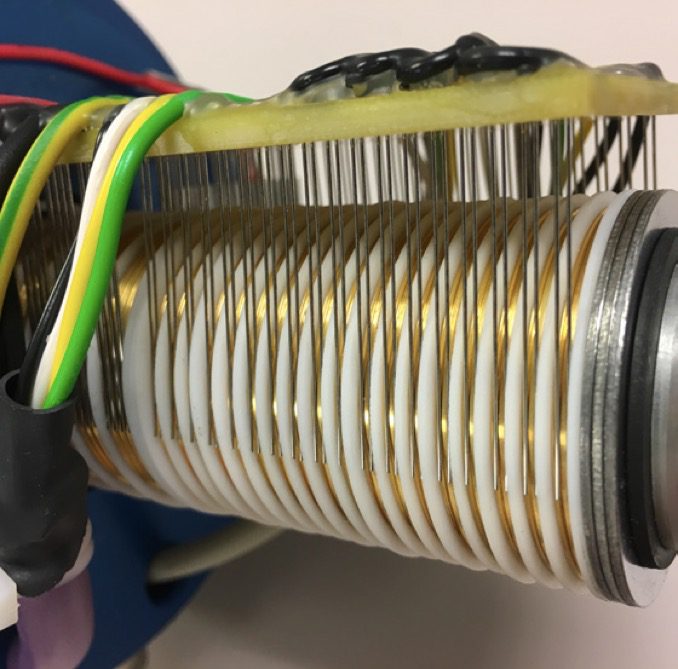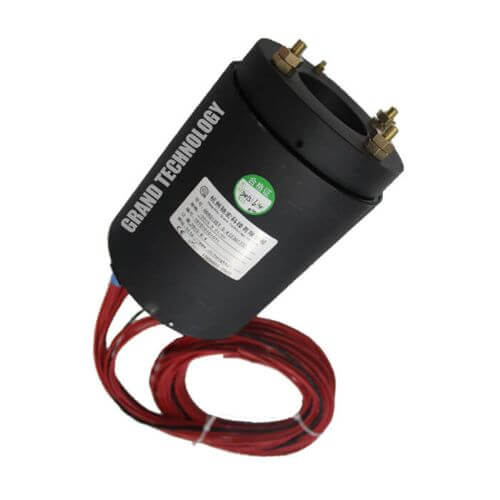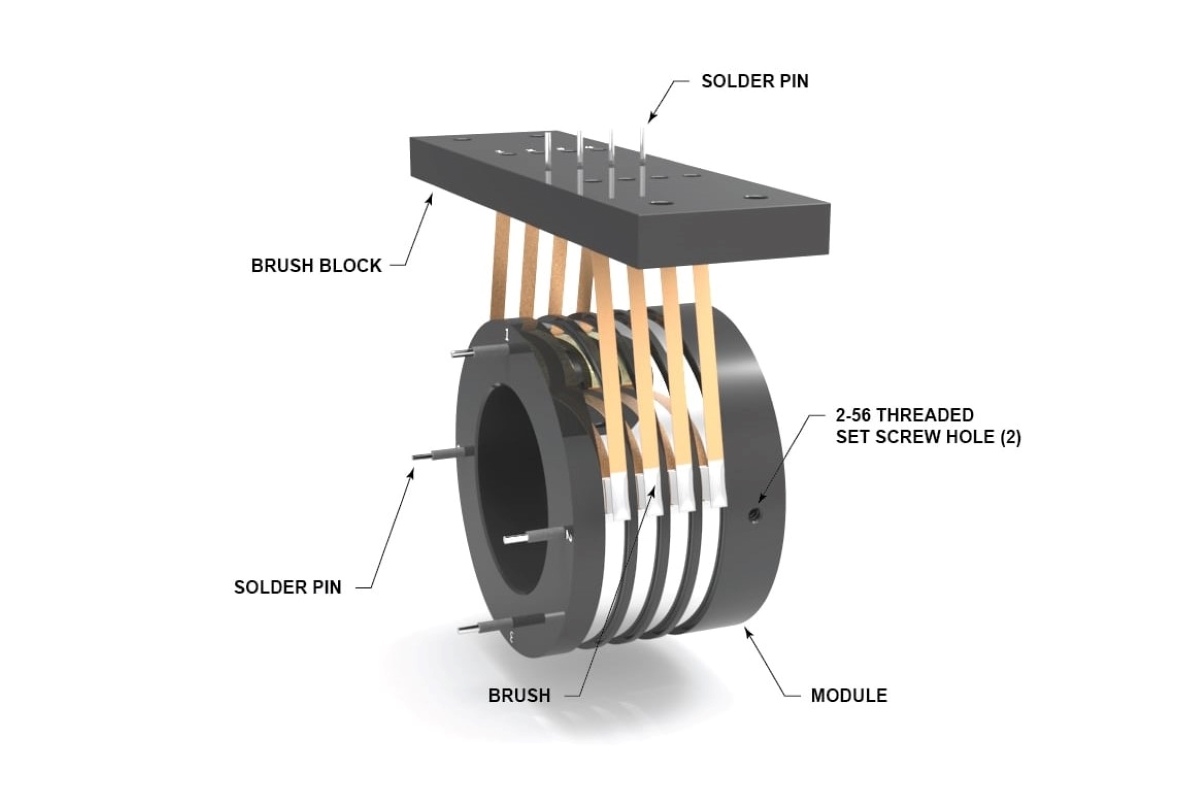This comprehensive guide delves into the pivotal role of brushes in a generator, starting with an introduction to their purpose and importance within the generator’s mechanism. As we navigate through the intricacies of their function, readers will gain a detailed understanding of how brushes facilitate power transfer from the alternator to the appliance. Furthermore, the article expounds on the anatomy of the brush, highlighting the crucial materials involved in its construction and the rationale behind its selection.
In the latter sections, the focus shifts to the critical aspects of selecting the right brushes for your generator, incorporating factors like durability, efficiency, cost, and compatibility. The maintenance segment provides insightful information on how to conduct regular inspections, cleaning, and timely replacements to ensure optimal performance and longevity of your generator. Lastly, common problems associated with generator brushes are thoroughly examined, offering practical solutions to troubleshoot issues effectively.
This guide aims to equip readers with the knowledge to maintain and optimize the function of brushes in their generators, ensuring reliable power generation while mitigating potential setbacks.
Introduction to Brushes in a Generator
As the heart of modern civilization beats to the rhythm of electrical power, the unsung heroes of this pulsating energy are often tucked away in the corners of engineering design, hidden from the limelight. Within the throbbing chambers of a generator, the brushes play a critical role that belies their humble name. What then, are these brushes, and how do they uphold the seamless flow of electricity that powers our lives?

At its core, a generator is a device that converts mechanical energy into electrical energy, feeding the insatiable demand of the grid, industries, and homes. It is an orchestra of moving and stationary parts, each in perfect harmony, and among these, the brushes are the conductors of electrical charge. They are essentially the mediators, ensuring the transfer of electricity from the spinning part of the generator, known as the rotor, to the static part called the stator, and eventually, to our cities and homes.
Embedded within the generator, brushes are typically made of carbon or graphite. These materials are chosen for their ability to conduct electricity while withstanding the friction and heat generated from contact with the rotating slip rings or commutators—a testament to the remarkable ingenuity of their design.
Imagine, if you will, a bustling power plant. The air vibrates with the hum of massive generators. At the heart of each is a rotor, spinning at high speeds, and the brushes, though small, maintain an intimate contact, allowing the stream of electrons to flow uninterrupted. If you’ve ever seen a locomotive streak by, you have witnessed the power of generators, and within them, the silent efficiency of the brushes at work.
The importance of brushes in a generator cannot be overstated. Without them, our world, dependent as it is on the reliable supply of electricity, would shudder to a halt. They ensure that the lights stay on in hospitals where lives are saved, that computers stay running in offices where ideas are born, and that stoves stay heated in homes where meals bring families together.
Real-world applications of brushes in generators span from the vast generators providing backup power for data centers to the portable units used in construction sites, from the emergency power systems in hospitals to the generators that kick into action during power outages at home. The brushes are the unflagging link ensuring that life’s rhythms skip no beat.
Despite their significant role, brushes in generators do come with a set of challenges. Wear and tear is an inevitable part of their lifespan, and their maintenance or replacement often raises concerns for users. Instances of sparking, noise, and reduced conductivity due to brush issues are common concerns that need to be addressed with precision and expertise.
As we embark on this journey through the pages of our modern-day electrical odyssey, our aim is to demystify the generator brush, to bring forth an understanding that inspires appreciation, and to offer the knowledge that empowers users to make informed decisions in the handling, troubleshooting, and maintaining of this vital component in the world of generators.
Through this exploration, we’ll clear the common misconceptions that brushes are mere afterthoughts in generator design. Instead, we’ll discover that they are, in fact, pivotal elements in ensuring the generator’s performance and longevity. With each subtitle of the following chapters unraveling a layer of this complex yet fascinating subject, let’s venture deeper into the dynamic world of brushes in a generator.
The Functionality of Brushes in a Generator
As we delve deeper into the thrilling world of generator mechanics, the functional relevance of brushes becomes increasingly apparent. The epitome of functionality and simplicity, the brushes, are pivotal in the transmission of energy inside a generator.
A generator, in essence, is a dynamic interplay of energy transformation – mechanical energy is transformed into electrical energy via electromagnetic induction. This transformation occurs within the heart of the generator, involving two primary components – the rotor and the stator. The rotor rotates producing a magnetic field, while the stator houses the conductive wire. This is where the noble brushes step into play.
The rotor connects with the brushes, turning with formidable energy. The brushes, in seemingly delicate yet steady contact with the slip rings or commutator, transmit this energy to the stator. As the electrically charged rotor spins, the brushes ensure a smooth and continuous flow of electric current from the rotor to the stator. They act as the bridge of electricity, making static what is inherently dynamic — the formula that lights up our modern civilization.

Consider this illustrative analogy — the role of the brushes in a generator is akin to the bartenders at a high-spirited party. These bartenders (brushes) facilitate the flow of drinks (electricity) from the bar (rotor) to the party-goers (stator). Without these bartenders, no matter how well-stocked the bar is or how eager the party-goers are, the party (electricity generation) would come to a standstill.
Real-world examples help solidify the importance of brushes in generators. Take the case of a hospital emergency room. In a power outage, a backup generator automatically kicks in, ensuring a continuous power supply. Within the generator, the brushes work tirelessly, enabling the flow of electricity to life-saving devices such as ventilators and heart monitors.
Undoubtedly, the brushes function as the critical link in a generator’s operation. They’re the conduits that directly impact the electric output of a generator and, by extension, its efficiency. Considering everything from the smallest portable generators used by campers to the colossal turbines that feed the grid, brushes are integral to their operation.
The functionality of brushes in a generator underscores their fundamental purpose – to maintain a stable, continuous electrical contact between the moving and stationary parts. In doing so, they facilitate a seamless flow of electricity, bringing our world to life one generator at a time. As we move forward through the coming chapters, we’ll explore the other aspects of brushes in a generator that further amplifies their significance.
Anatomy of the Brushes in a Generator
The spectacle of energy transformation we just unraveled in the previous chapter owes its success to the humble yet robust construction of the brushes within a generator. A closer look into their design intricacies will offer us a better understanding of how these tiny yet formidable components make a gigantic impact.
Material Choices
At first glance, generator brushes may seem like simple pieces of metal. In reality, they are usually made from materials like graphite or carbon, chosen meticulously for their specific properties. Carbon and graphite, naturally abundant and cost-effective, are good conductors of electricity and exhibit remarkable resistance to heat. They withstand the considerable friction that arises from their contact with the fast-rotating elements of the generator, thus ensuring their durability.
Design Considerations
The brush design takes into account its vital role as a conduit for electrical current. Usually rectangular or square in shape, brushes are designed to have flat surfaces to maximize the area of contact with the rotor’s slip rings or the commutator. This ensures a steady and uninterrupted flow of electricity, thereby enhancing the generator’s efficiency.
Real-world illustrations: The Art of Brush Design
To comprehend the importance of brush design, think of a water pipe in daily use. If the pipe is too narrow, the water flow will be restricted, and water pressure will drop. In contrast, a pipe with an appropriate diameter facilitates a constant and robust water flow. This analogy succinctly communicates the role of a well-designed brush, effectively mediating electricity flow, exactly the way an aptly sized pipe carries water.
Consider another example, large wind turbines that dot the landscapes of many rural areas and offshore sites. These colossal powerhouses harness wind energy to produce electricity and are often equipped with brushes to facilitate current transfer. The brushes in these generators are designed and manufactured to withstand not just high levels of electrical load but also extreme weather conditions.

Challenges and Mitigation
Despite their essential role and near-infallible design, brushes are not entirely without challenges. They wear down over time due to continuous contact with rotating surfaces, and their efficiency can decrease if not maintained properly. It’s much like a pencil that requires consistent sharpening to function optimally. This wear and tear is, however, mitigated by making brushes replaceable, thus ensuring the generator’s longevity.
Deciphering the anatomy of the brushes reveals how their material selection and design contribute effectively to the generator’s ultimate function—the delivery of electricity that powers our world. As we delve deeper into the coming chapters, we’ll address the potential issues associated with brushes in generators and unfold strategies to optimize their performance and lifespan.
Selection Criteria: Selecting the Right Brushes in a Generator
Venturing into the final lap of our journey through the generator’s heart, we touch upon an aspect of utmost importance—selecting the ideal brushes for a generator. This selection is pivotal not only for the efficient operation of the generator but also for its longevity and reliability. Here, we break down the selection criteria into four key components: durability, efficiency, cost, and compatibility.
Durability: The Lifeline of Generator Brushes
When considering brushes, the prime attribute to judge is their durability. The ability of brushes to withstand wear and tear directly impacts the maintenance schedule and operational life of a generator. Graphite and carbon, known for their resilience against heat and friction, emerge as the materials of choice. Remember, a durable brush reduces the frequency of replacements, ensuring that the generator remains operational for prolonged periods.
Real-World Insight
Consider the Alaskan wilderness, where generators are a lifeline. Here, durable brushes mean less frequent maintenance trips, which are both costly and challenging due to the remote locations. For such setups, brushes made of high-grade materials providing longer life are indispensable.
Efficiency: Maximizing Electrical Conductivity
Efficiency in brushes relates to how well they can transfer electricity from the rotor to the load without significant losses. A brush with high electrical conductivity minimizes energy loss, translating directly into operational cost savings for the generator user.
Case Study
Energy efficiency is critical in large-scale operations, such as data centers, which operate 24/7. These centers rely on backup generators to prevent data loss during power outages. Efficient brushes minimize power losses, which are crucial for maintaining the integrity of stored information while optimizing energy usage.
Cost: Balancing Quality with Expense
While durability and efficiency are paramount, the cost cannot be overlooked. The objective is to find a balance between high-quality brushes that offer longevity and efficiency without excessively inflating the operational budget. Often, investing in slightly more expensive brushes upfront can lead to lower total costs over the generator’s lifespan due to reduced maintenance and replacement needs.
Practical Tip
Always make a cost-benefit analysis considering the brush’s lifespan and maintenance requirements against its price. This can significantly optimize your investment and ensure you are not merely paying for a brand name but for genuine quality and reliability.
Compatibility: Ensuring a Perfect Match
Not every brush fits every generator. Compatibility is crucial to ensure the brush works harmoniously with the generator’s specifications. This includes physical dimensions, material compatibility, and suitability for the generator’s operation type (e.g., continuous vs. intermittent).
How to Ensure Compatibility
Thoroughly review your generator’s manual for brush specifications or consult with a professional. Taking a generator model and operational environment into account will guide you to the correct brush type for your equipment, avoiding costly incompatibilities.
Selecting the right brushes for your generator is a nuanced process that entails a delicate balance between durability, efficiency, cost, and compatibility. By paying close attention to these criteria, you can significantly enhance your generator’s performance and reliability. Remember, the goal is to ensure that the generator operates at its best, sustaining productivity, safety, and peace of mind. As we have journeyed through the anatomy and functionality of brushes, it’s clear they are not just mere components but the lifeline of the generator’s soul.
By thoughtfully selecting the right brushes, we safeguard this soul, ensuring our world remains powered, regardless of the challenges it faces.
Maintenance of Brushes in a Generator
Upon entering the final realm of our thorough understanding of brushes in generators, we delve into a topic of significant relevance—maintenance. A well-maintained brush is the lifeblood of an efficiently running generator. In contrast, poor maintenance can lead to reduced performance and potentially severe damage. In this section, we explore how to properly maintain generator brushes through regular inspection, cleaning, and replacement.
Regular Inspections: The Eyes on Brilliance
Routine examination of generator brushes should be a fundamental part of your generator maintenance plan. Inspect your brush for any signs of wear or damage, such as unusual size reduction, broken edges, and uneven wear patterns. Detecting these signs early can circumvent unexpected generator downtimes.
Make sure to also assess spring tension in the brush holders. Insufficient tension can result in poor contact between the brushes and the commutator, affecting electricity transfer. On the other hand, excessive tension may lead to increased friction and consequently rapid wear.
Pioneer’s Guide:
Inspect your generator brushes at least every six months. However, for generators used extensively or in harsh environments, inspections should be carried out more frequently.
Cleaning: The Guardian of Purity
Eliminating dust and debris is vital in maintaining your generator brushes. Copper dust from the commutator or carbon dust from the brushes can accumulate, leading to poor conductivity and even short circuits if not regularly cleaned. Use an air compressor or a vacuum with a brush attachment to safely remove any dust or accumulation.
Pro Tip:
Never use solvents or abrasives for cleaning as they can potentially damage brush material or contaminate the generator’s internal components.
Replacements: The Rebirth of Efficiency
Despite your best maintenance efforts, brushes will eventually wear down and require replacement. Once the brush’s length reduces beyond the manufacturer’s specified minimum, it’s time to switch them out for new ones. Moreover, if a brush exhibits cracks or other physical damage, don’t hesitate to replace it, even if the wear seems minimal.
Real-World Glimpse:
Consider hospitals that heavily rely on backup generators. In such critical scenarios, brush replacement should always err on the side of caution. The smallest malfunction can have serious consequences on life-supporting systems.
The Consequences of Poor Maintenance
Negligence in maintenance is inviting disaster. Poorly maintained brushes can lead to inefficiencies, erratic power, or even total generator failure due to excessive brush wear or damage. All these could lead to unexpected power outages, jeopardizing operations reliant on the generator.
Case Study:
Recall the unfortunate incident associated with Hurricane Katrina, during which several hospitals experienced a complete power outage due to failure in their backup generators, severely disrupting patient care.
Wrap-up
Proper maintenance of your generator brushes can’t be stressed enough. It not only ensures smoother and more efficient operation but also extends your generator’s life, giving you peace of mind during emergencies. Remember, the key is to be proactive rather than reactive; regular inspection, diligent cleaning, and timely replacement will brave through the tides of disruption, powering our lives seamlessly. Equipped with these insights, let’s wield our newfound knowledge to turn the gears of our generators with unerring confidence and adeptness!
Troubleshooting Common Problems with Brushes in a Generator
As we navigate further into the engineering marvel that is the generator, it’s crucial to address the hiccups that might occur—particularly with generator brushes, which are pivotal in electricity generation. Despite our meticulous maintenance efforts, problems can emerge. Here, we delve into some common issues associated with generator brushes, providing actionable solutions to ensure your generator runs smoothly.
Excessive Brush Wear and Tear
One frequent problem is the accelerated wear and tear of brushes, often resulting from excessive load, improper brush grade selection, or misalignment of the brush in its holder.
Solution:
- Review and Adjust Load: Ensure the generator is not consistently running at full capacity; this strains the brushes unnecessarily. Consider using a generator with a higher capacity if peak loads can’t be avoided.
- Correct Brush Grade and Alignment: Consult with the generator or brush manufacturer to choose the correct brush grade for your specific application. Also, ensure brushes are properly aligned in their holders to avoid uneven wear.
Real-World Example:
A small manufacturing plant experienced frequent generator failures. Upon investigation, it was found that the generator was undersized for their operations, leading to excessive brush wear. Upgrading to a higher-capacity generator resolved their issues.
Poor Electrical Contact
Another common issue is poor electrical contact between the brushes and commutator or slip rings, which can result in arcing, sparking, and unstable generator output.
Solution:
- Clean and Maintain Contact Surfaces: Regular cleaning of the brushes and commutator or slip rings can prevent buildup that causes poor contact. Ensure that the brushes move freely in their holders and maintain the correct tension.
Case Study:
A remote telecom base station was experiencing intermittent generator failures leading to network outages. Maintenance discovered that dust and grit had built up on the commutator, impairing electrical contact. A cleaning regimen was instituted, solving the problem.
Brush Spring Tension
Incorrect brush spring tension is a less obvious but significant issue. Too much tension can lead to excessive wear, while too little tension might cause arcing or even detachment of the brush from the commutator.
Solution:
- Regular Checks and Adjustments: Use a spring tension gauge to occasionally check and adjust the brush holder spring tension to the recommended setting by the manufacturer.
Pro Tip:
Always keep a couple of springs of varying tension on hand. If the tension appears unsuitable during a regular check, replace the spring immediately rather than adjusting it forcibly.
Flickering or Unstable Power Output
Flickering or unstable power output may indicate a problem with the brushes not evenly distributing load, possibly due to wear or misalignment.
Solution:
- Comprehensive Brush and Generator Inspection: Look for wear patterns or damage on both the brushes and the commutator. Realign or replace brushes as necessary and check for other issues in the generator that might affect stability.
Real-World Insight:
A festival was almost plunged into darkness due to the generator flickering. The culprit: worn and poorly aligned brushes. A last-minute inspection and brush replacement saved the event.
Brush-related issues in generators are quite common but, with the right knowledge and tools, entirely manageable. Recognizing the signs of wear, understanding the importance of correct selection and alignment, and addressing issues promptly can avert disaster. Embracing a proactive stance towards maintenance, rather than a reactive one, ensures that your generator remains a reliable source of power. Remember, in the realm of generators, attention to the smallest component can make a world of difference.


